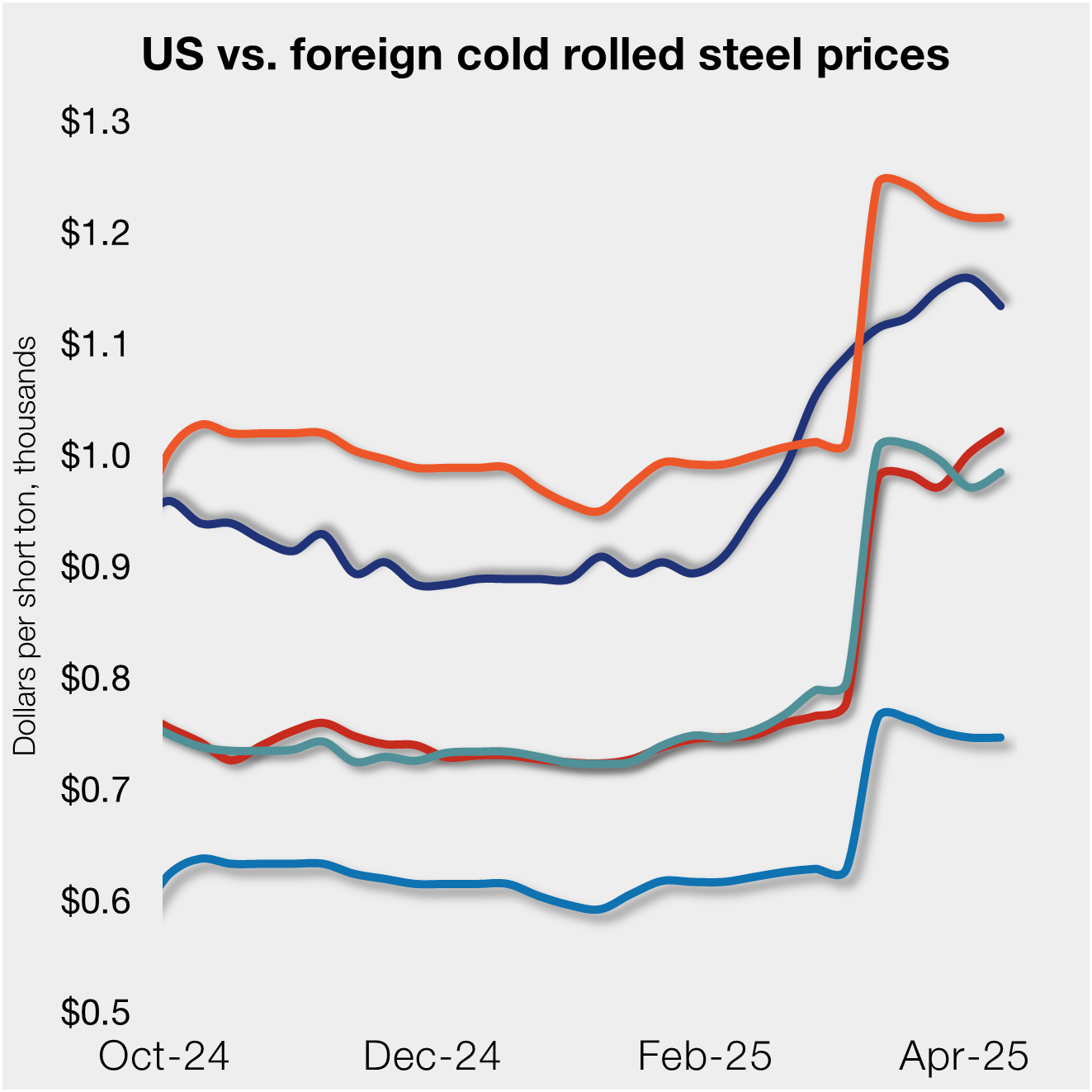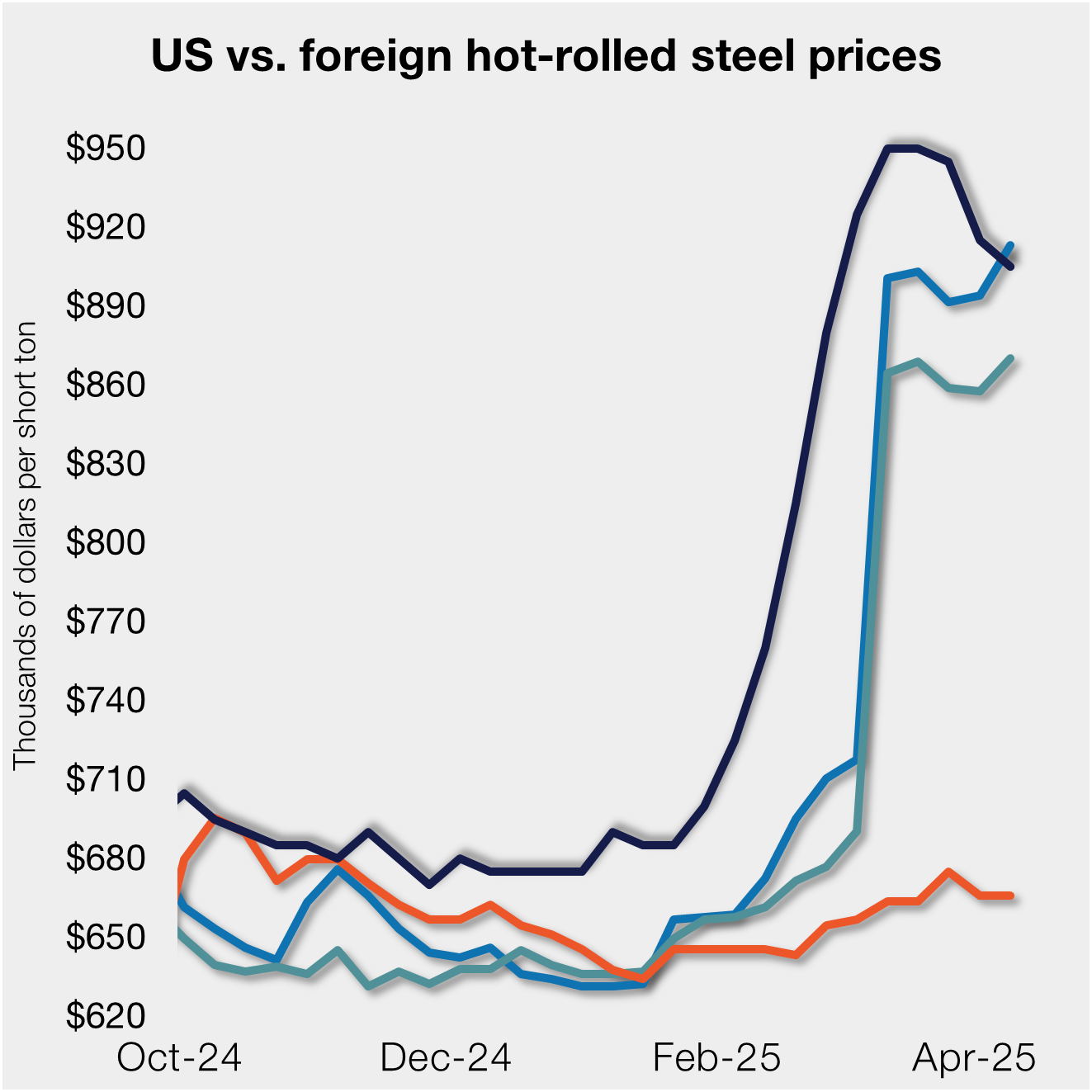Steel Products
AGC: Construction Employment Data for May 2019
Written by Sandy Williams
June 7, 2019
Results for First Four Months of 2019 Combined Show Ongoing Strength Aside from Single-Family Market; Association Officials Urge End to Tariffs That Pose Threat to Construction Costs and Demand
AGC, June 7, 2019 — Construction spending was unchanged from March to April, with mixed results by project type for the month and for the year to date, according to an analysis today by the Associated General Contractors of America of new federal spending data. Association officials warned that tariffs and countermeasures by U.S. trading partners are adding costs and uncertainty to construction projects and are potentially reducing demand for numerous types of projects.
“Overall spending was flat in April, but that masks significant differences among the various construction sectors for both the latest month and the first four months of 2019 combined,” said Ken Simonson, the association’s chief economist. “The year-to-date totals, which are a more reliable indicator of underlying trends than are initial monthly estimates, show activity is still increasing for most project types other than single-family homebuilding.”
Construction spending totaled $1.30 trillion at a seasonally adjusted annual rate in both March and April, according to estimates the U.S. Census Bureau released today. For the first four months of 2019 combined, spending edged up by 0.2 percent from the same period in 2018.
Public construction spending soared 4.8 percent for the month and 11.8 percent year-to-date. Among the three largest public categories, highway and street construction spending jumped 17.2 percent, educational construction climbed 8.9 percent and transportation (airports, transit, rail and port) construction increased 6.2 percent.
Private nonresidential spending declined 2.9 by percent from March to April but the four-month total was 2.6 percent higher than in January-April 2018. Major private nonresidential categories mostly experienced spending increases year-to-date. The largest, power construction (comprising electric power generation, transmission and distribution, plus oil and gas fields and pipelines), increased by 2.0 percent year-to-date. Commercial (retail, warehouse and farm) construction decreased by 6.0 percent. Manufacturing construction posted a 10.7 percent gain. Private office construction spending rose 8.0 percent.
Private residential construction spending slipped 0.6 percent for the month and 7.6 percent year-to-date. Single-family homebuilding decreased 7.1 percent in the first four months of the year while spending on multifamily projects increased 7.9 percent. Spending on residential improvements slumped 13.1 percent year-to-date.
Association officials said that ever-changing tariffs have made it difficult for contractors to estimate project costs accurately, while retaliatory actions by U.S. trading partners cut into demand for construction by exporters, their suppliers and their logistics and transportation partners. The officials urged President Trump to end tariffs that are harming U.S. contractors and other businesses, and to avoid using tariffs as a weapon for immigration or other policies. They added that the latest round of threatened tariffs is coming at time when private-sector demand for construction is essentially flat.
“These tariffs are doing much more harm than good,” said Stephen E. Sandherr, the association’s chief executive officer. “They drive up construction costs, cause uncertainty for businesses that need to know their costs before investing in projects, and damage U.S. competitiveness.”

Sandy Williams
Read more from Sandy WilliamsLatest in Steel Products

CRU tariff webinar replay now available
CRU’s latest webinar replay on how Trump’s tariffs affect the global steel market is now available on our website to all members. After logging in at steelmarketupdate.com, visit the community tab and look under the “previous webinars” section of the dropdown menu. You’ll find not only this special CRU webinar but also all past Community […]

US, offshore CRC prices diverge
US cold-rolled (CR) coil prices declined this week, slipping for the first time since early February. Most offshore markets deviated, moving higher this week.

Construction growth slowed in March on tariff woes: Dodge
The decline comes after reaching a record high in January to kickstart the year.

Return of S232 zapped gap between US and EU HR prices, Asian HR remains cheaper
Domestic hot-rolled (HR) coil prices declined this week for a third straight week. Most offshore markets bucked the trend and gained ground. Uncertainty in the US market around tariffs, especially after “Liberation Day,” caused US prices to slip as buyers moved to the sidelines. It’s unclear to date whether the 90-day pause on the more […]

SMU Steel Demand Index momentum slows further
SMU’s Steel Demand Index growth eased again, according to early April indicators. The slowdown comes after the index reached a four-year high in late February.
